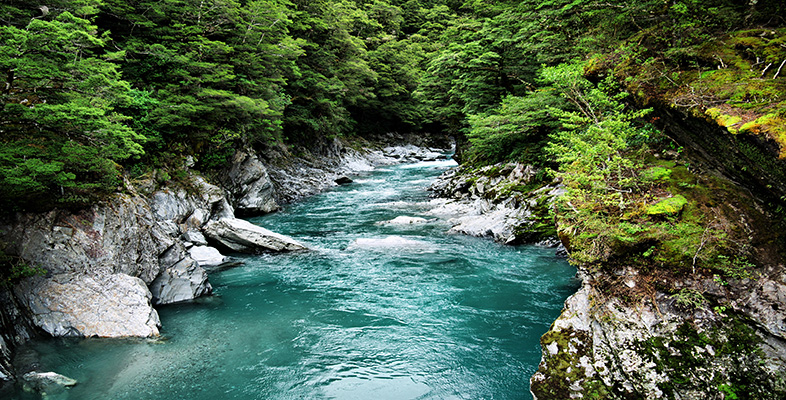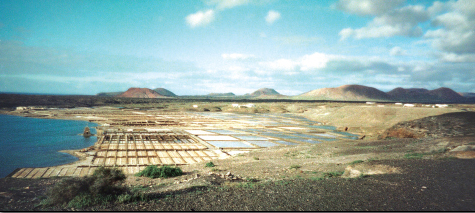2.7 The 'salt' in seawater
The difficulty with having so much of the Earth's water locked up in the oceans is summed up poetically by Coleridge's 'Ancient Mariner', becalmed on board ship in the doldrums, beneath a blazing Sun.
Water, water, everywhere,
And all the boards did shrink;
Water, water, everywhere,
Nor any drop to drink.
With so much Pacific Ocean around them, and dying of thirst, why didn't the ship's crew just lower a bucket and bring up some seawater to drink? As you know, there is a very important difference between seawater and fresh water. Seawater contains various salts. The most abundant of these salts is known as sodium chloride, the most common constituent of table salt. Other salts contain calcium and magnesium. If you were to put 100 g of seawater in a pan and boil it, you would find about 3.5 g of the different salts left behind as a residue after all the water had evaporated. Although some salts are required in the human diet, there is only a certain amount that can be tolerated. The excess is removed by the body.
Question 7
How are these excess salts removed from the body?
Answer
Some salts may be lost in sweat, but most of the excess is removed by the kidneys and excreted in urine.
The problem for the kidneys is that in order to remove the salts, they need water. The more salts, the more water they require. So, after drinking seawater, the 'Ancient Mariner' crew would have been even thirstier, because of the need to remove the excess salts. The problem is compounded by the fact that one of the constituents of the salts in seawater irritates the last section of the large intestine called the rectum. This causes diarrhoea, with a further loss of water. The end result would be that the crew members would be thirstier than before.
Seawater can be converted into fresh water by a process called desalination (which means, literally, salt removal). The easiest and cheapest way to do this is to use the natural energy of the Sun to evaporate seawater, but this is a slow process. Other methods of desalination use different energy sources - oil, for example. Either way, desalination is a costly business and so is generally used only in those countries wealthy enough to afford it (e.g. in the Arabian Peninsula, Iran and the USA - in Arizona and California), and only where there is no other source of fresh water. The salt residue left over from the evaporation of seawater may be used as a commercial source for the brands of table salt that are sold as 'sea salt' (Figure 9). One such brand boasts on its label: 'Obtained from the Mediterranean Sea, naturally evaporated by the hot sun'.
Both water and salts are described as chemical compounds. You will take a closer look at them in the next section.

